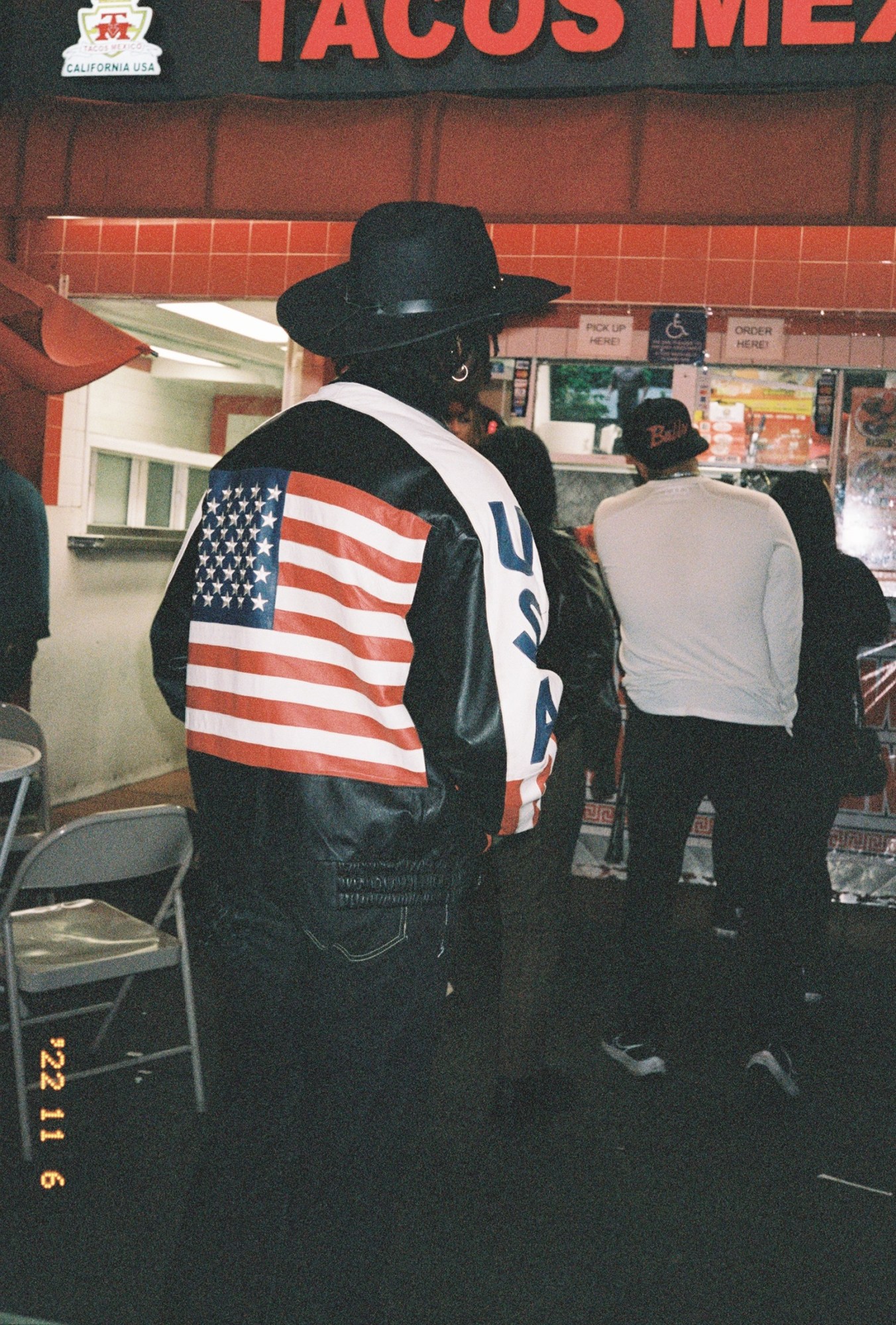Audiences first encounter YOBWOC on their own skin, as flickering silver shivers emanate from a disco ball above. It’s a byproduct of American Artist’s sculpture, Kentucky Disko, part of the exhibition in which artists explore the iconography and mythos of the cowboy.
Curated by Antwaun Sargent in collaboration with Helmut Lang, and staged at New York’s Hannah Traore Gallery, the exhibition includes sculptures, paintings, sound installations and photography from artists including Turiya Adkins, Awol Erizku, Devin B. Johnson, Justen Leroy, Daniel Obasi, and Quay Quinn Wolf.
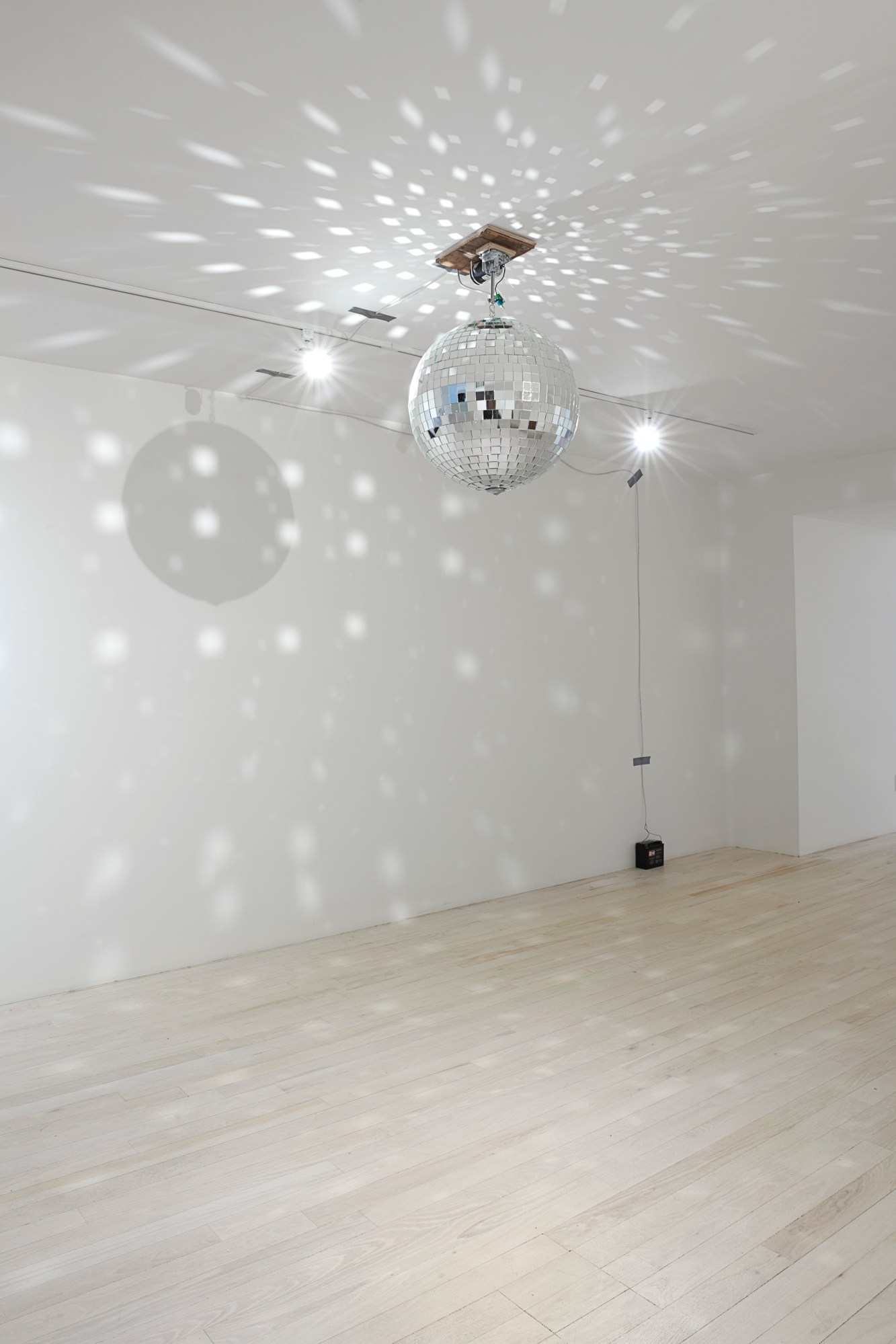
Collectively, these artists explore the idea that cowboy communities are not corralled to North America’s rural West, but exist in urban environments globally as well. Devin B. Johnson’s abstract compositions City Slicker 1 and 2 allude to the cowboy’s presence within the heart of densely populated locales. Likewise, Daniel Obasi’s triptych cinematic photographs, “Moments of Youth”, taken in Lagos, Nigeria, depict a regal white horse with three subjects adorned in swaths of diaphanous fabric. For Daniel, the images represent “nostalgia, escapism, the joy in communal fellowship with like-minded people, vulnerability, and the strength in holding space for one another.”
In tandem with the exhibition, Antwaun debuted his first fashion design project, which riffs on Helmut Lang’s famous “COWBOY” T-shirt from their SS04 collection. In the original design, the word was printed in reverse across the inside of the garment in grayscale to read YOBWOC. “There’s no image and it’s just text, but that text operates like a painting or work of art in a way,” Antwuan says. “The viewer must complete the meaning. The shirt asks, when you see the word ‘cowboy’, what do you think?” His iteration of the T-shirt renders the word “TRA” (“ART” when read backwards) in red.
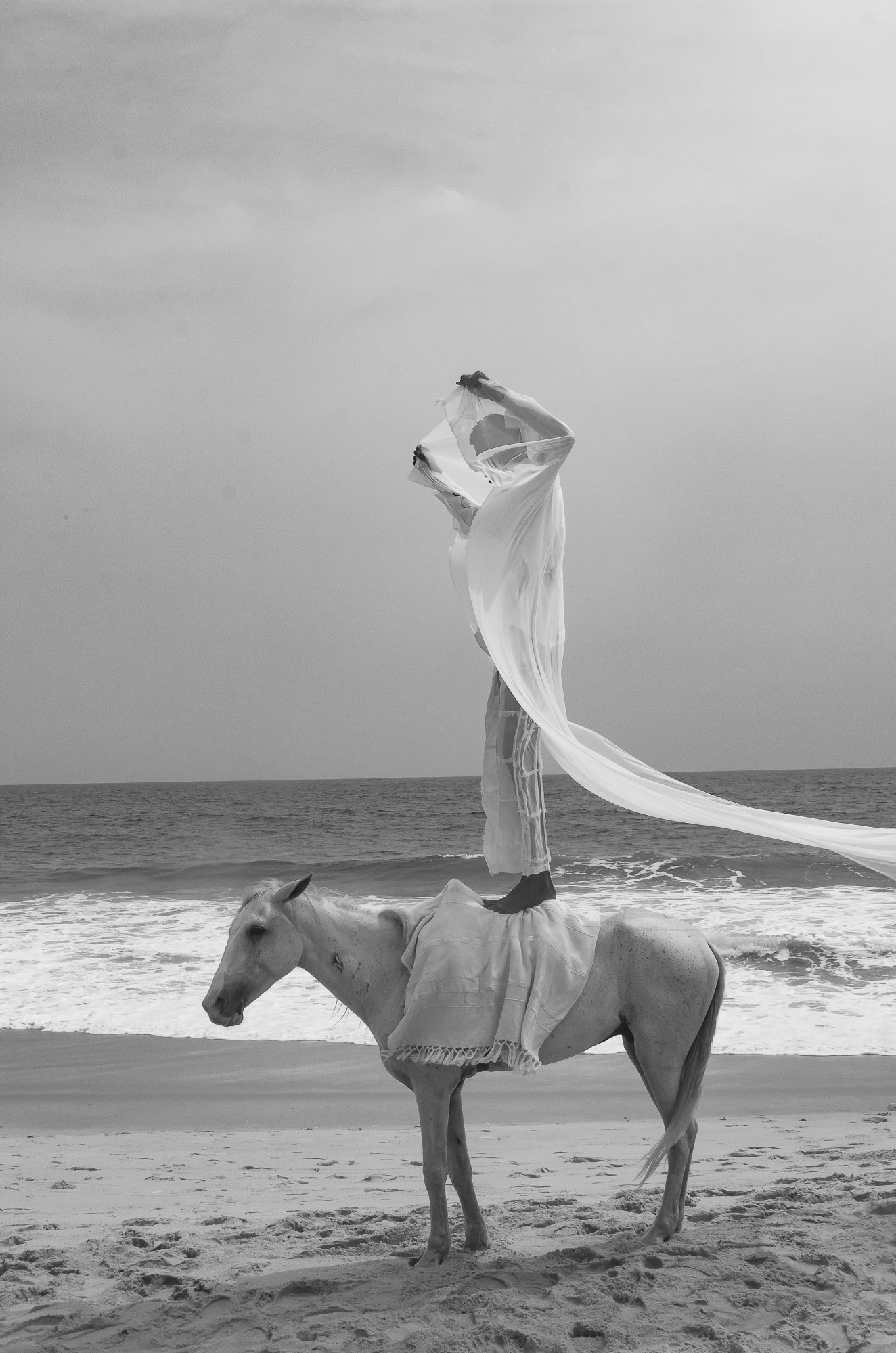
Aligned with one of Helmut Lang’s central brand pillars — a celebration of transgression — the inversion of the word “ART” speaks to the increasingly exclusionary modus operandi that is rapidly shifting in the art world, as it adopts a more open perspective instead. The intention behind Antwaun’s design unspools directly into the coalescing thread of the exhibition itself, making a claim about not only who gets to be understood as a cowboy, but also who gets to question and explore the parameters of this distinctly American iconography.
Antwaun also developed a zine to accompany the exhibition. “When we think about the cowboy… [we] don’t think about it in its fullness,” he says. “[We] don’t think about what the cowboy means beyond John Wayne and Westerns. One of the facts that keeps coming to mind is that 25% of cowboys were Black in the American West.”
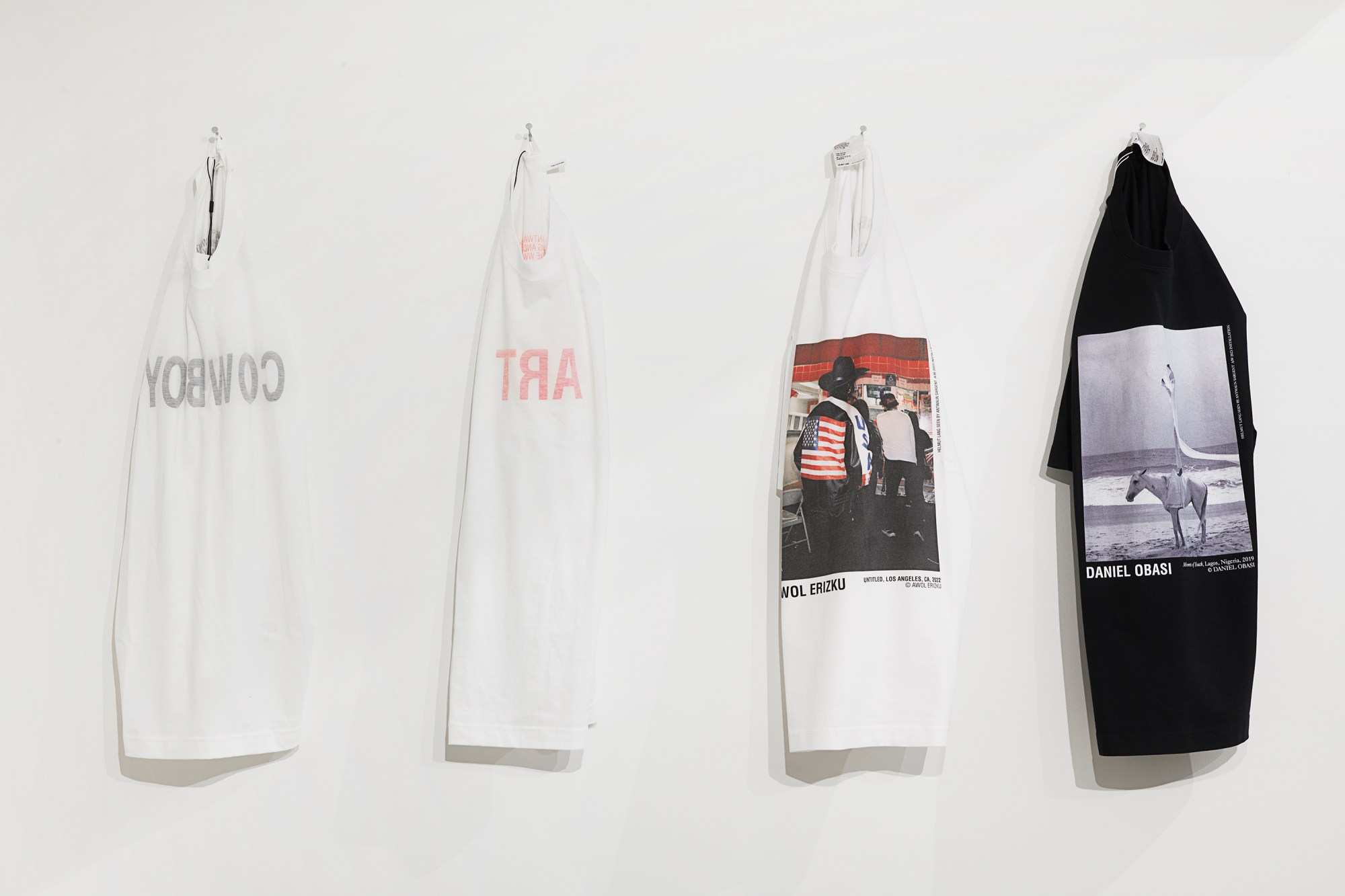
Turiya Adkins’ painting “As Not Without Aim” elucidates Antwaun’s remark. Turiya’s work “focuses on the vast migratory patterns of Africans and African Americans” and is invested in illuminating the poetic nature of Black bodies in motion. The painting pays homage to the overlooked contributions of Black cowboys to America’s Westward Expansion, reinserting a decisively Black presence into mainstream understandings of the development of North American terrain.
American Artist’s “Auto-Cowboy”, a make-shift enclosure made of lumber and barbed wire, hints towards not only the containment of cattle, but the psychic constriction around the collective imagination associated with cowboys. Similarly, Awol Erizku’s photograph titled “USA Jacket: ACE” depicts a Black subject donned in a cowboy hat and a leather jacket that bears the American flag. Like any other iconography, the cowboy is associated with a certain mythos that is connected to specific objects, the donning of which allows one to perform or embody a particular archetype. Awol’s images ask: What does a cowboy look like? Who gets to perform or embody this iconography in the contemporary moment? How do the implications of this iconography irrevocably shift once Black subjects perform or investigate it?
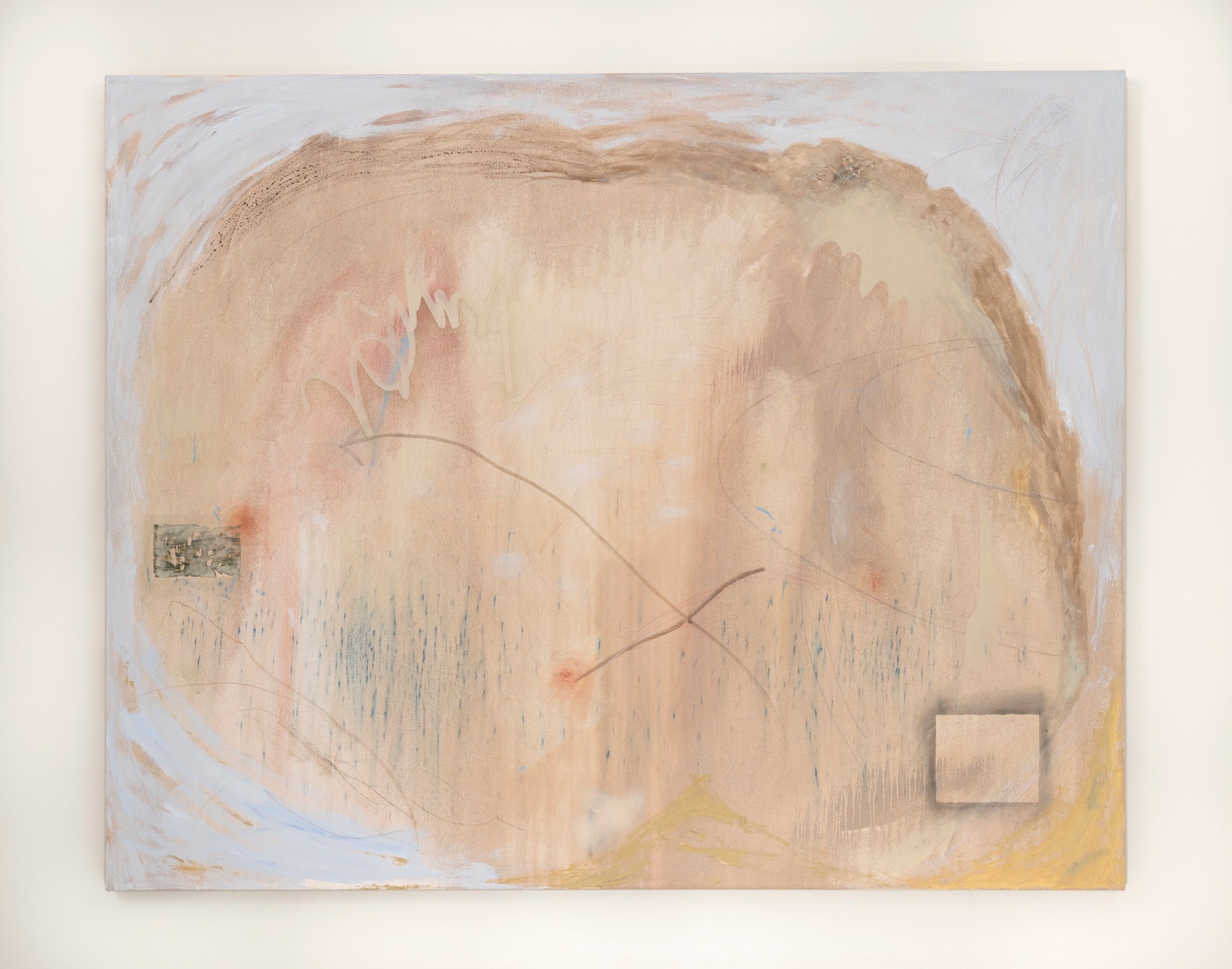
Through his installation “Hymn I”, Justen Leroy conjures the interior landscape of an imagined cowboy. The work was made in response to two guiding questions the artist posed to himself: “What is the spiritual force that guides the cowboy?” and “What is the hymn he’d compose as he travels across different terrains?” A row of headphones, which viewers can use to engage with the sonic dimension of the work, are hung across from an image of Justen’s father, who journeyed from Jamaica to the United States. The artist notes his father’s “natural, instinctual moments of prayer” as a core memory that informed his rendering of the cowboy’s inner world.
Quay Quinn Wolf’s sculpture “Saddle” is made of hand-cut and stitched leather draped delicately over an auto-body repair stand. It’s a meditation on the embodied dimensions of cowboyhood: “When thinking of the word ‘cowboy’ I think about the body,” Quay says. “I think about the strain on the body, I think about the sweat, the grime, and oil imprinted on the saddle.” Here, Quay elegantly brings the questions of labour and sensation to the fore.
YOBWOC slices under the epidermis of the historically narrow representation and imagination of the cowboy, both in its embodied state but also the ideological questions that surround it. In turn, it reveals a refraction that embraces a broader and more incisive vision.

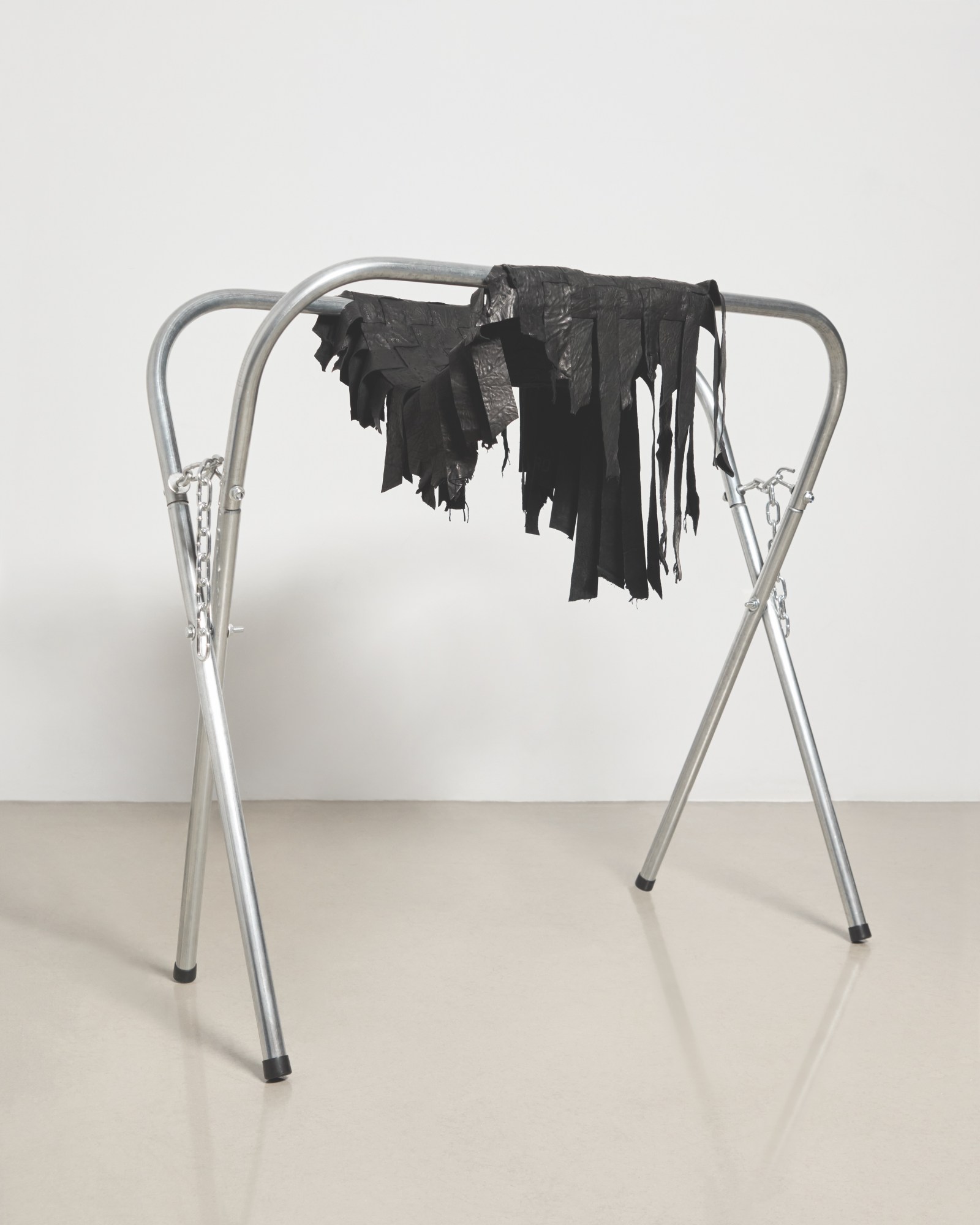


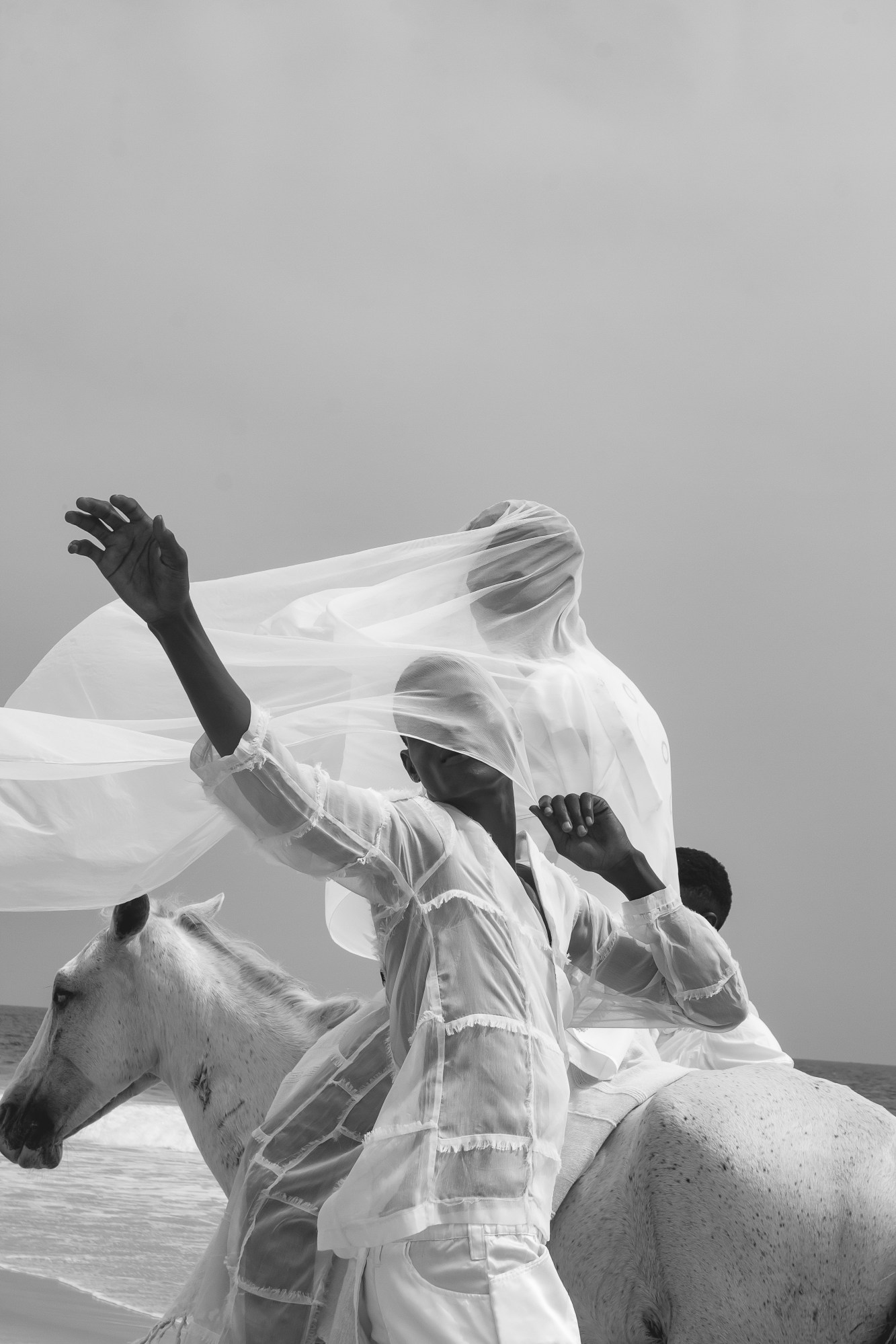
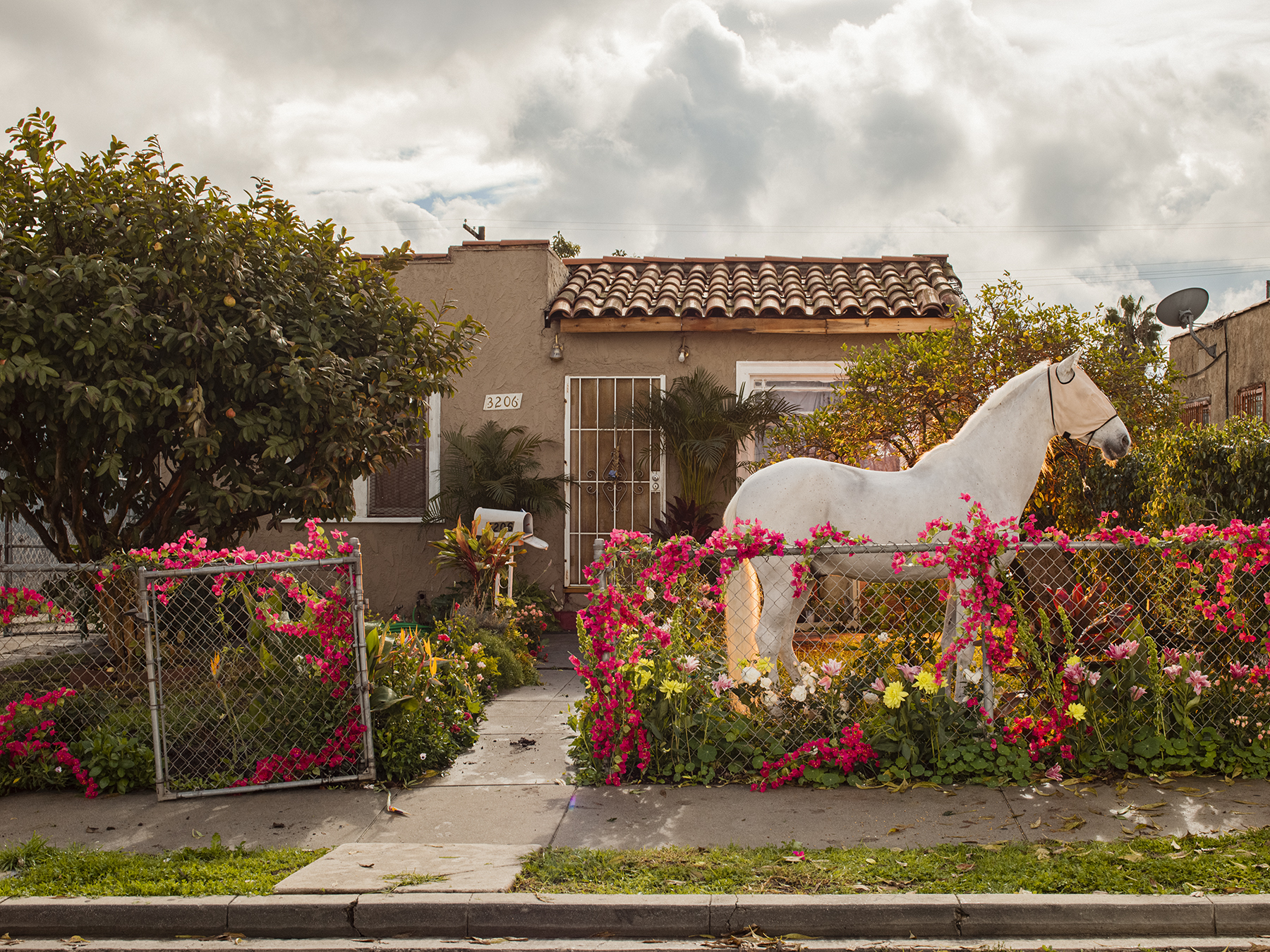
Credits
Images courtesy of Helmut Lang and Hannah Traore Gallery
